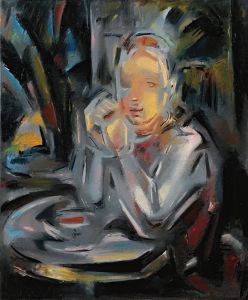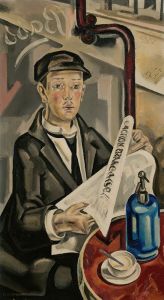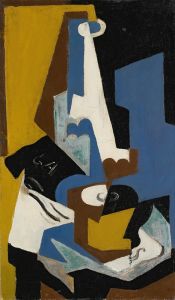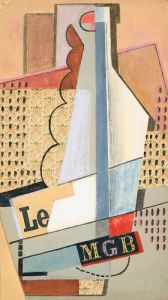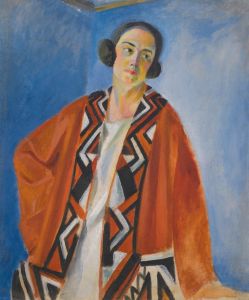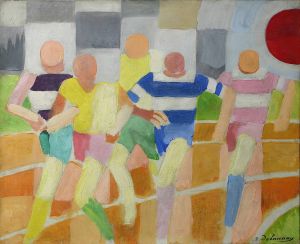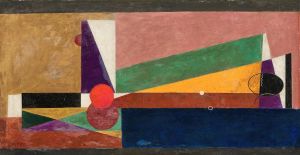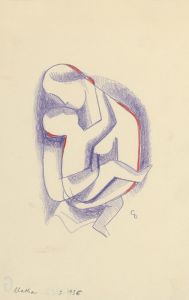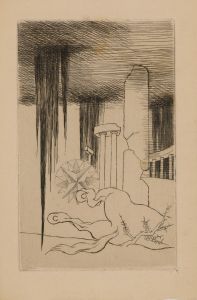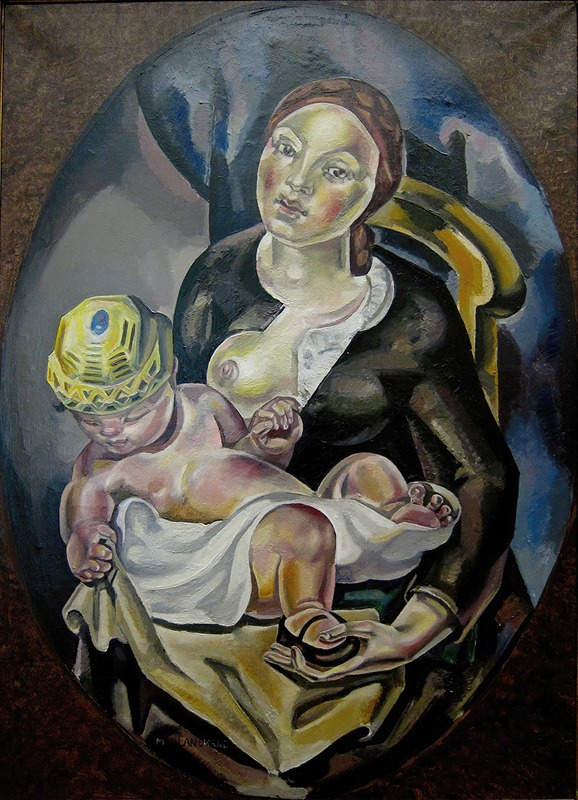
Maternité
A hand-painted replica of María Blanchard’s masterpiece Maternité, meticulously crafted by professional artists to capture the true essence of the original. Each piece is created with museum-quality canvas and rare mineral pigments, carefully painted by experienced artists with delicate brushstrokes and rich, layered colors to perfectly recreate the texture of the original artwork. Unlike machine-printed reproductions, this hand-painted version brings the painting to life, infused with the artist’s emotions and skill in every stroke. Whether for personal collection or home decoration, it instantly elevates the artistic atmosphere of any space.
"Maternité" is a painting created by the Spanish artist María Blanchard, who was an influential figure in the early 20th-century art scene. Born in Santander, Spain, in 1881, Blanchard became known for her contributions to the Cubist movement and her unique approach to depicting human figures and emotions.
The painting "Maternité," which translates to "Motherhood" in English, is one of Blanchard's most celebrated works. Completed in 1921, this piece exemplifies her mature style, which blends elements of Cubism with a more personal, expressive approach. The painting portrays a mother and child, a theme that Blanchard explored frequently in her work, reflecting her deep interest in human relationships and emotional states.
In "Maternité," Blanchard employs a distinctive use of geometric forms and a subdued color palette to convey the intimate bond between the mother and child. The figures are rendered with a combination of angular and curved lines, creating a sense of both structure and tenderness. The mother's face is depicted with a serene expression, while the child is nestled closely to her, emphasizing the protective and nurturing aspects of motherhood.
Blanchard's technique in this painting demonstrates her mastery of Cubist principles, such as the fragmentation of forms and the use of multiple perspectives. However, she also infuses the work with a sense of warmth and humanity that sets it apart from the more analytical and detached works of her contemporaries. This balance between abstraction and emotional depth is a hallmark of Blanchard's style and contributes to the enduring appeal of "Maternité."
Throughout her career, María Blanchard faced numerous challenges, including physical disabilities and financial difficulties. Despite these obstacles, she remained dedicated to her art and achieved recognition for her contributions to modern art. Her work was exhibited alongside that of other prominent artists of the time, such as Juan Gris and Diego Rivera, and she maintained close relationships with many leading figures in the art world.
"Maternité" is housed in the Museo Nacional Centro de Arte Reina Sofía in Madrid, Spain, where it continues to be admired by visitors from around the world. The painting is considered a significant example of Blanchard's oeuvre and a testament to her ability to convey profound emotional experiences through her art.
María Blanchard's legacy as a pioneering female artist in the early 20th century remains influential, and her work continues to be studied and celebrated for its innovative approach and emotional resonance. "Maternité" stands as a powerful representation of her artistic vision and her commitment to exploring the complexities of human relationships through the language of modern art.





